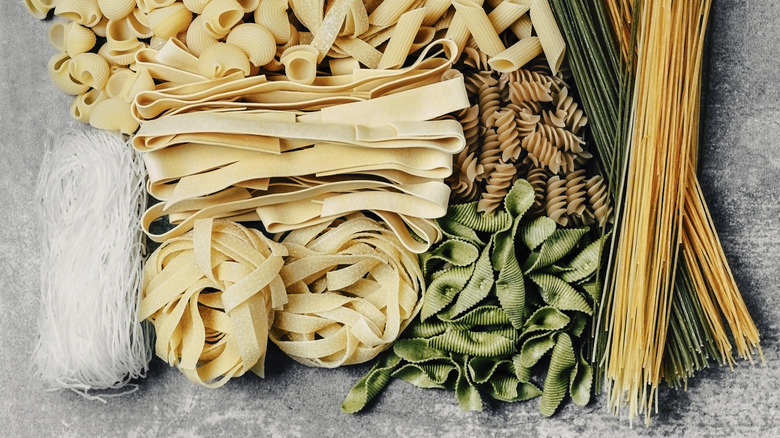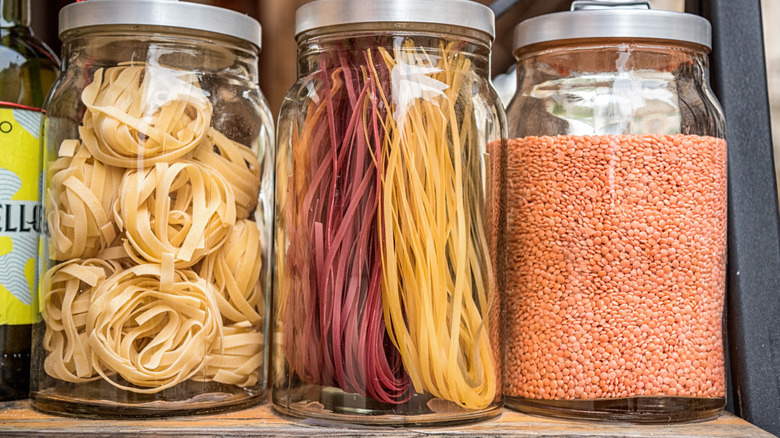Here's How You Should Store Dried Pasta When The Box Isn't Cutting It
Dried pasta is humble. It's reliable. It's always there for you at 9 p.m. when dinner ambition has left the building. But have you ever opened a box of bronze-cut bucatini, used two-thirds, then shoved it back into the pantry, only to rediscover it months later ... with some friendly pantry weevils? While dried pasta is one of the least fussy foods out there, storing it correctly can make it last longer, help your pantry look more put-together, and, mostly importantly, keep your kitchen bug-free. First things first: Don't beat yourself up about the carb-loving bugs. It's not because you have a dirty kitchen; rather, they were already present in the packaging at the warehouse or grocery store and just came along for the ride. But they're certainly a reason to keep dried pasta and other grains securely stored.
The great news is that, besides bugs, dried pasta can last up to two years, as long as it stays away from moisture, heat, and sunlight. This means your pantry, a cupboard, or literally any shelf not near your stove is fair game. Keeping your dried pasta in a cool, dry, dark place is food storage step one. Step two is to ditch the original packaging. The box or bag it came in technically works, but it's floppy. It spills. It never reseals right. Worst of all, most pantry bugs can eat right through a plastic bag or cardboard box. If you're serious about protecting pasta, it's time to upgrade.
Embrace the container life for pasta storage
Do yourself a favor and transfer that pasta to an airtight food storage container right now. Glass jars, clear plastic bins, even old-school Tupperware can do the job. Bonus: It's way easier to see what you have on hand, which means you're less likely to buy your fourth box of rigatoni "just in case." If your kitchen is a swamp (i.e., extra humid), you could also toss a silica gel packet in the canister to keep things extra dry. While you're busy transferring your dried pastas to containers, don't forget to slap on a label. Not just for the type, but to also include the cooking time, if you want to feel truly superior come dinner hour. While we don't encourage running out to buy fancy containers made specifically for pasta, there are a couple shapes that call for it. Spaghetti and linguine are the awkward giraffes of the pasta world, so you might consider a tall jar or a spaghetti canister, like this set of Glass Food Storage Jars with Lids.
Now that you've got your pasta properly tucked away from heat, moisture, and bugs, it's still a good idea to keep the "best by" date handy for best quality. If it's been sitting in your cabinet since the pre-pandemic days, it might still be safe, but the texture can suffer and the flavor may fade. It's time to treat that precious dried pasta like a pantry MVP, not a time capsule.

